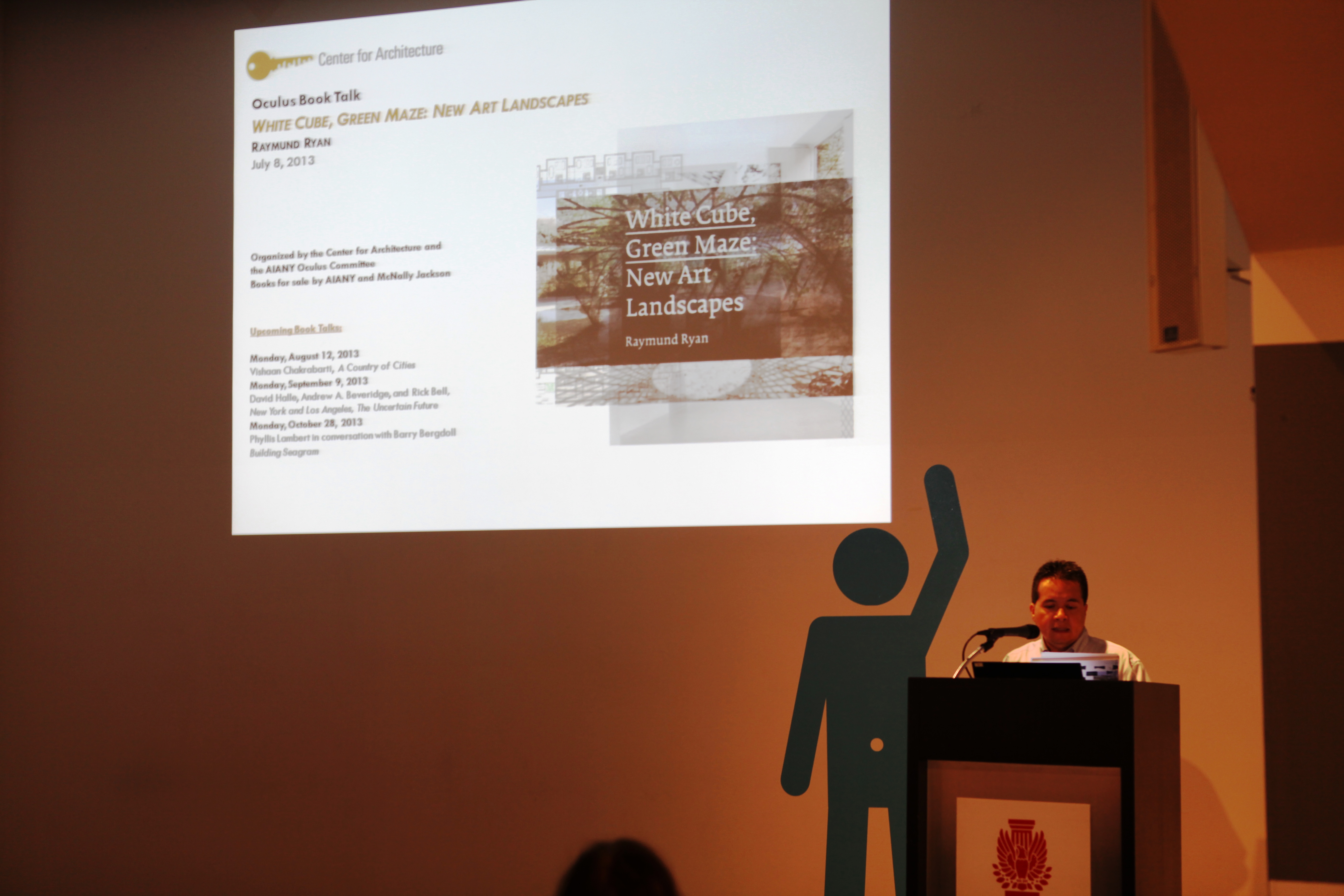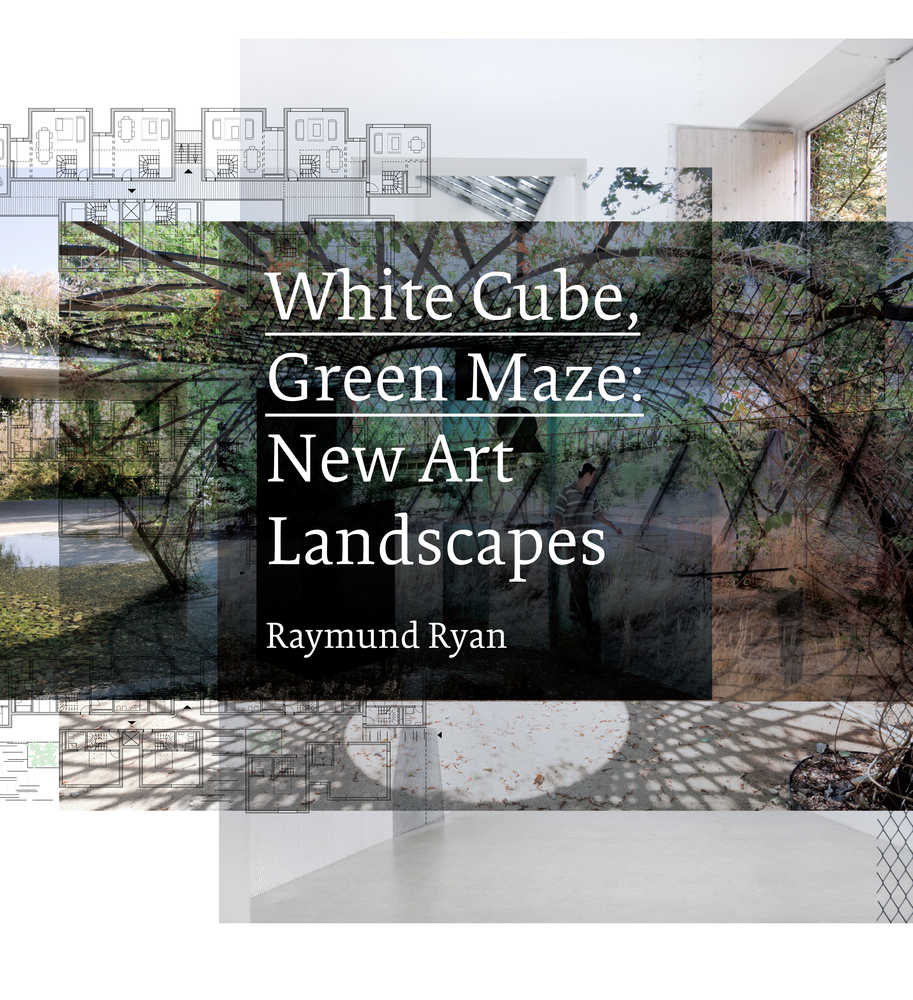by: ac
Raymund Ryan sets out to illustrate the demise of the heroic museum in his recent book White Cube, Green Maze: New Art Landscapes. As he takes us through a variety of art sites that reshape the notion of art institutions, he illustrates that pristine white galleries in a Beaux-Arts envelope are passé. His research led to an exhibition, a book, and on 07.08.13 at the Center for Architecture, an illuminating interview with Miguel Angel Baltierra, Assoc. AIA, LEED AP, and an elegant lecture.
The questioning of the museum as a form is the operative strategy for Ryan’s work. Spanning the world, all but one institution developed from a single source of philanthropy; all are engaged in the resurrection of a disused landscape; and all dance with the landscape to reinvent art’s frame. All seem to aspire to a democratic relationship with their communities, and all are remote. Ryan, therefore, rightly discusses these places as sites or projects rather than museums.
During his lecture, he walked through the projects aided by lovely Iwan Baan photographs. Seeing each project on screen, one could understand the “occupiable” quality of each project, enjoy Baan’s habit of commandeering a helicopter for overhead shots, and generally revel in his ability to view the sites in a human way. This quality is a bit lost in the publication; the photos are small on the page and end up being illustrative and not experiential. Most lacking in the book is Ryan’s enthusiasm for Baan’s work.
I thought the most interesting points in Ryan’s talk were when he discussed the pragmatics and challenges of this new art place. Installation art as a form is challenging for museums: pieces are difficult to exhibit, store, and maintain. The practice of no labels and no guards at the evocative Stiftung Insel Hombroich in Neuss, Germany,is, for example, the most memorable example of shifting the art viewing experience. With the rise of this genre, though, new spaces and new attitudes are needed. This work is large in scale and, taking cues from Donald Judd’s Marfa compound, a forsaken landscape can offer a home for these epic endeavors.
A forsaken landscape also offers a commentary on the greatest issue of our time: climate change. Placing art in extreme conditions focuses the conversation on the problem, albeit quietly. The use of brownfields as a new cultural birthplace is another popular strategy, which Ryan’s work solidifies and promotes. The economics of these projects are intriguing; most are from a single-source benefactor, and most are derived from that benefactor’s vision and control, yet the democratic quality of the projects stand out. A conversation about economic factors would have been a valuable addition to the book.
All of the institutions Ryan write about break down creative professionalism. Artist-as-architect, client-as-designer, and architect-as-artist: this devolution of the professions seems to make the projects more sympathetic to the landscape, and all the heroism of Modernism dissolves into a more convivial relationship with the community.
The essays by Marc Trieb and Brian O’Doherty give the arguments historical and theoretical gravitas and overall, the book is a wonderful catalogue of this trend. As art institutions that are far away from an urban center have proliferated, I am grateful that Ryan compiled these projects and their sharp, innovative methods that support these new definitions.
Annie Coggan is a principal with Coggan and Crawford Architects, and teaches at the Fashion Institute of Technology and the School of Visual Arts in New York City.










